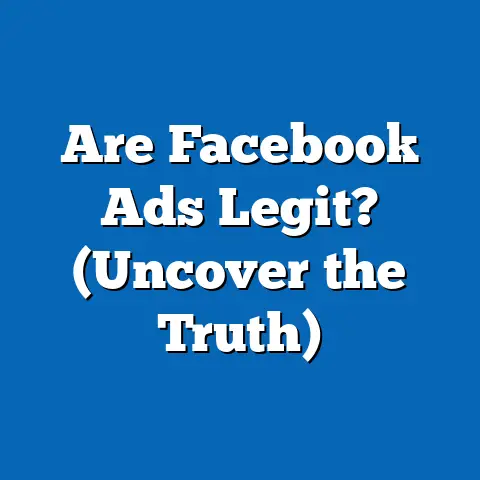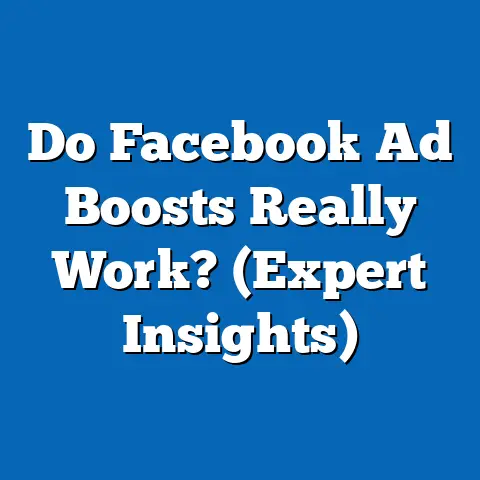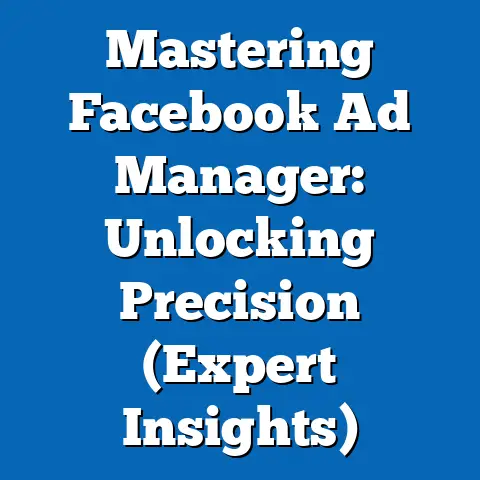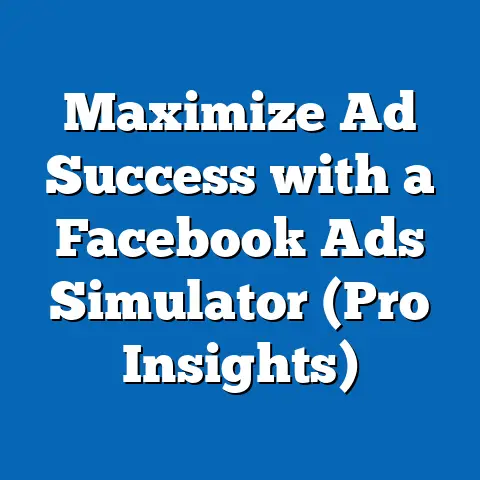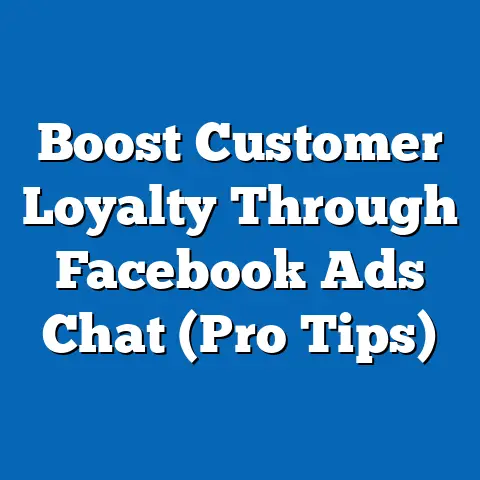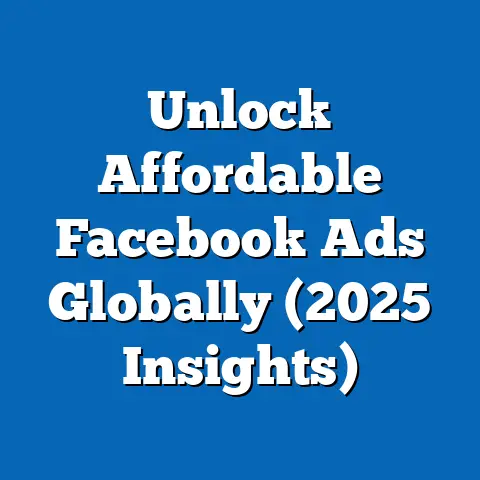Mastering Auto Bid Facebook Ads (Unlocking Optimization Secrets)
In the ever-evolving world of digital marketing, especially within the realm of Facebook advertising, one thing remains constant: change. Consumer behaviors shift, algorithms update, and new technologies emerge, all demanding that marketers be adaptable and forward-thinking. This is where mastering Auto Bid strategies becomes crucial. It’s not just about saving time; it’s about future-proofing your campaigns and ensuring you stay ahead of the curve.
I’ve seen firsthand how businesses struggle to keep up with these changes, often resulting in wasted ad spend and missed opportunities. That’s why I’m passionate about sharing my insights on Auto Bid, a powerful tool that, when wielded correctly, can significantly boost your ROI.
Auto Bid isn’t just a set-it-and-forget-it solution. It’s a dynamic, data-driven approach to ad spending that allows you to leverage Facebook’s algorithms to optimize your campaigns in real-time. This article will delve deep into the optimization secrets that can unlock the true potential of Auto Bid, transforming your Facebook ad strategy from reactive to proactive. We’ll explore everything from setting up your campaigns correctly to interpreting performance metrics and overcoming common challenges. So, let’s dive in and discover how to make Auto Bid work for you.
Understanding Auto Bid on Facebook
Auto Bid, also known as automated bidding, is a feature within Facebook Ads Manager that allows Facebook’s system to automatically adjust your bids in real-time based on your campaign’s objectives and performance. Instead of manually setting bids for each ad set, you give Facebook the reins, trusting its algorithms to find the most efficient way to reach your target audience and achieve your desired results.
Think of it like this: you’re hiring a seasoned negotiator (Facebook’s algorithm) to represent you in an auction (the Facebook ad auction). You tell the negotiator your goals (e.g., get the most conversions possible within a certain budget), and they use their expertise and real-time data to make bids on your behalf.
The mechanics of Facebook’s auction system are complex, but the core principle is simple: Facebook wants to show the most relevant ads to its users while maximizing its own revenue. When an ad slot becomes available, Facebook runs an auction among advertisers targeting that user. The winning ad is the one that Facebook predicts will deliver the most value, based on a combination of the bid amount, the ad’s quality score, and the estimated action rate (how likely the user is to engage with the ad).
Auto Bid fits into this system by continuously analyzing data and adjusting bids to optimize for your chosen objective. Facebook’s algorithms consider factors like:
- User behavior: How likely is a user to click on your ad, visit your website, or make a purchase?
- Ad relevance: How well does your ad match the user’s interests and intent?
- Competition: What are other advertisers bidding for the same audience?
Based on these factors, Facebook automatically adjusts your bids to ensure you’re getting the most bang for your buck.
There are several types of Auto Bid strategies available on Facebook, each designed for different campaign objectives:
- Lowest Cost: This strategy aims to get you the most results for your budget, spending your entire budget each day to find the cheapest opportunities. It’s best for campaigns focused on maximizing volume, such as generating leads or driving website traffic.
- Target Cost: This strategy aims to achieve a specific cost per result. You set a target cost (e.g., $10 per conversion), and Facebook will try to keep your average cost as close to that target as possible. It’s suitable for campaigns where you have a clear understanding of your desired cost per acquisition.
- Cost Cap: This strategy allows you to set a maximum bid amount. Facebook will never bid higher than your cost cap, giving you more control over your spending. It’s useful for campaigns where you want to limit your risk and ensure you’re not overpaying for results.
- Value Optimization: This strategy is specifically for e-commerce businesses. It aims to maximize the total purchase value generated by your ads. You need to have conversion value tracking set up for this strategy to work effectively.
While Auto Bid offers numerous advantages, such as efficiency and data-driven optimization, it also has some drawbacks compared to manual bidding:
Advantages:
- Time-saving: Automates the bidding process, freeing up your time to focus on other aspects of your campaign.
- Data-driven: Leverages Facebook’s vast data to optimize bids in real-time.
- Scalability: Allows you to easily scale your campaigns without having to manually adjust bids.
- Efficiency: Often delivers better results than manual bidding, especially for complex campaigns.
Disadvantages:
- Less control: You relinquish some control over your bids, trusting Facebook’s algorithms to make decisions on your behalf.
- Learning curve: Requires a period of learning and optimization for Facebook’s algorithms to understand your campaign and audience.
- Potential for overspending: If not properly monitored, Auto Bid can sometimes lead to overspending, especially with the Lowest Cost strategy.
Takeaway: Auto Bid is a powerful tool that can significantly improve your Facebook ad performance, but it’s essential to understand its mechanics, choose the right strategy for your objectives, and monitor your campaigns closely to ensure you’re getting the desired results.
Setting Up Your Auto Bid Campaign
Setting up an Auto Bid campaign on Facebook Ads Manager is a straightforward process, but it’s crucial to get the key settings right to ensure your campaign performs optimally. Let’s walk through the steps:
- Create a New Campaign: Start by clicking the “Create” button in Ads Manager and choose your campaign objective. This is a critical step, as your objective will influence the bidding strategies available to you. Common objectives include Conversions, Traffic, Engagement, and Lead Generation.
- Set Your Budget: Decide on your daily or lifetime budget. Keep in mind that Auto Bid needs enough data to learn and optimize, so starting with a reasonable budget is important. I typically recommend starting with at least $20 per day for most campaigns, but this can vary depending on your industry and target audience.
- Define Your Audience: This is where you specify who you want to reach with your ads. You can target people based on demographics, interests, behaviors, and connections. The more specific your audience, the better Facebook’s algorithms can optimize your bids.
- Choose Your Ad Placements: Select where you want your ads to appear. You can choose automatic placements, which allows Facebook to show your ads on the platforms and placements where they’re likely to perform best, or you can manually select specific placements, such as Facebook Feed, Instagram Feed, or Audience Network. I generally recommend starting with automatic placements, as this gives Facebook more flexibility to optimize your bids.
- Select Your Bidding Strategy: This is where you choose your Auto Bid strategy. As mentioned earlier, you have several options: Lowest Cost, Target Cost, Cost Cap, and Value Optimization. The best strategy for you will depend on your campaign objective and goals.
- Create Your Ads: Design your ads with compelling visuals and persuasive copy. Make sure your ads are relevant to your target audience and aligned with your campaign objective.
Key Settings to Configure:
- Budget: Your budget is the amount of money you’re willing to spend on your campaign. It’s important to set a budget that’s realistic and aligned with your goals.
- Audience Targeting: Your audience targeting determines who sees your ads. The more specific your audience, the better Facebook’s algorithms can optimize your bids.
- Ad Placements: Your ad placements determine where your ads appear. Choosing the right placements can significantly impact your campaign performance.
- Campaign Objective: Your campaign objective tells Facebook what you want to achieve with your campaign. This is a critical setting, as it influences the bidding strategies available to you.
Defining Clear Goals:
Before you launch your Auto Bid campaign, it’s essential to define clear goals. What do you want to achieve with your campaign? Do you want to generate leads, drive website traffic, increase sales, or build brand awareness? Your goals will influence your bidding strategy and how you measure success.
For example, if your goal is to generate leads, you might choose the Lowest Cost bidding strategy and focus on optimizing for cost per lead. If your goal is to drive website traffic, you might choose the Lowest Cost bidding strategy and focus on optimizing for cost per click.
Selecting the Right Objective:
Choosing the right objective is crucial for the success of your Auto Bid campaign. Facebook offers a variety of objectives, each designed for different goals. Here are some common objectives and their corresponding bidding choices:
- Conversions: This objective is for driving specific actions on your website, such as purchases, sign-ups, or form submissions. Suitable bidding choices include Lowest Cost, Target Cost, and Value Optimization.
- Traffic: This objective is for driving traffic to your website or landing page. A suitable bidding choice is Lowest Cost.
- Engagement: This objective is for increasing engagement with your ads, such as likes, comments, and shares. A suitable bidding choice is Lowest Cost.
- Lead Generation: This objective is for collecting leads directly on Facebook. A suitable bidding choice is Lowest Cost.
Takeaway: Setting up your Auto Bid campaign correctly is essential for success. Make sure you choose the right objective, define clear goals, configure key settings, and select the appropriate bidding strategy.
Optimization Secrets for Auto Bid
Now that you’ve set up your Auto Bid campaign, it’s time to delve into the optimization secrets that can unlock its true potential. This is where you move beyond the basics and start leveraging data, advanced techniques, and machine learning to improve your campaign performance.
Data Analysis and Performance Metrics:
Data analysis is the cornerstone of Auto Bid optimization. You need to continuously monitor your campaign’s performance and interpret key metrics to identify areas for improvement. Some of the most important metrics to track include:
- Click-Through Rate (CTR): The percentage of people who see your ad and click on it. A high CTR indicates that your ad is relevant and engaging to your target audience.
- Cost Per Click (CPC): The amount you pay each time someone clicks on your ad. A low CPC indicates that you’re getting efficient traffic to your website.
- Conversion Rate: The percentage of people who visit your website and complete a desired action, such as making a purchase or filling out a form. A high conversion rate indicates that your website is effective at converting traffic into leads or sales.
- Cost Per Acquisition (CPA): The amount you pay for each conversion. A low CPA indicates that you’re getting efficient results from your campaign.
- Return on Ad Spend (ROAS): The amount of revenue you generate for every dollar you spend on advertising. A high ROAS indicates that your campaign is profitable.
By analyzing these metrics, you can identify areas where your campaign is performing well and areas where it needs improvement. For example, if your CTR is low, you might need to improve your ad copy or visuals. If your conversion rate is low, you might need to optimize your website or landing page.
Advanced Techniques:
In addition to data analysis, there are several advanced techniques you can use to enhance your Auto Bid effectiveness:
- Audience Segmentation: Divide your target audience into smaller, more specific segments based on demographics, interests, behaviors, or other factors. This allows you to tailor your ads and bidding strategies to each segment, improving relevance and performance. For example, you might segment your audience by age, gender, location, or purchase history.
- A/B Testing: Test different versions of your ads, landing pages, or bidding strategies to see which performs best. This allows you to continuously optimize your campaign and improve your results. For example, you might test different headlines, images, or call-to-actions in your ads.
- Retargeting: Target people who have previously interacted with your website or ads. This allows you to re-engage potential customers who have already shown interest in your products or services. For example, you might retarget people who have visited your website but haven’t made a purchase.
- Lookalike Audiences: Create audiences that are similar to your existing customers or website visitors. This allows you to reach new people who are likely to be interested in your products or services. For example, you might create a lookalike audience based on your customer list or website traffic.
The Role of Machine Learning:
Machine learning plays a crucial role in optimizing Auto Bid campaigns. Facebook’s algorithms use machine learning to continuously analyze data and adjust bids to improve your campaign performance. By understanding how machine learning works, you can better leverage its capabilities.
Facebook’s algorithms learn from various signals, including:
- User behavior: How people interact with your ads and website.
- Ad relevance: How well your ads match the user’s interests and intent.
- Competition: What other advertisers are bidding for the same audience.
Based on these signals, Facebook’s algorithms adjust your bids in real-time to optimize for your chosen objective. The more data Facebook has, the better its algorithms can optimize your bids. That’s why it’s important to give your Auto Bid campaigns enough time to learn and optimize.
Case Studies:
Let’s look at a few examples of successful Auto Bid campaigns:
- E-commerce Business: An e-commerce business used Auto Bid to drive sales of its new product line. By segmenting its audience by age and gender, A/B testing different ad creatives, and retargeting website visitors, the business was able to increase its ROAS by 30%.
- Lead Generation Company: A lead generation company used Auto Bid to generate leads for its sales team. By creating lookalike audiences based on its existing customer list and optimizing for cost per lead, the company was able to reduce its CPA by 20%.
- Local Restaurant: A local restaurant used Auto Bid to drive traffic to its website and increase reservations. By targeting people within a specific radius of the restaurant and A/B testing different ad placements, the restaurant was able to increase its website traffic by 40%.
Takeaway: Optimizing your Auto Bid campaigns requires a combination of data analysis, advanced techniques, and an understanding of machine learning. By continuously monitoring your campaign’s performance, experimenting with different strategies, and leveraging Facebook’s algorithms, you can unlock the true potential of Auto Bid and achieve your desired results.
Common Challenges and Solutions
Even with the best strategies in place, marketers often face challenges when using Auto Bid on Facebook. Understanding these challenges and knowing how to overcome them is crucial for success.
Budget Overspend:
One common challenge is budget overspend, especially with the Lowest Cost bidding strategy. This can happen if Facebook’s algorithms are too aggressive in their bidding, resulting in you spending your entire budget without achieving the desired results.
Solution:
- Monitor Your Campaign Closely: Keep a close eye on your campaign’s performance and adjust your budget if necessary.
- Set a Cost Cap: Consider using the Cost Cap bidding strategy to limit your maximum bid amount.
- Adjust Your Audience Targeting: Narrow your audience targeting to reach a more specific group of people.
Low Ad Performance:
Another challenge is low ad performance, which can manifest as low CTR, low conversion rate, or high CPA. This can happen if your ads are not relevant to your target audience, your website is not optimized for conversions, or your bidding strategy is not aligned with your goals.
Solution:
- Improve Your Ad Copy and Visuals: Make sure your ads are compelling, relevant, and aligned with your target audience’s interests.
- Optimize Your Website or Landing Page: Ensure your website is user-friendly, mobile-friendly, and optimized for conversions.
- Adjust Your Bidding Strategy: Experiment with different bidding strategies to see which performs best for your campaign.
- A/B Test Your Ads: Test different versions of your ads to see which performs best.
Lack of Control Over Bids:
Some marketers feel a lack of control over their bids when using Auto Bid. They worry that Facebook’s algorithms are making decisions without their input, leading to unpredictable results.
Solution:
- Use the Cost Cap Bidding Strategy: This strategy allows you to set a maximum bid amount, giving you more control over your spending.
- Monitor Your Campaign Closely: Keep a close eye on your campaign’s performance and adjust your bidding strategy if necessary.
- Understand Facebook’s Algorithms: Learn how Facebook’s algorithms work to better understand how they’re making bidding decisions.
Takeaway: Common challenges in Auto Bid campaigns can be addressed through careful monitoring, strategic adjustments, and a thorough understanding of Facebook’s algorithms.
Conclusion: Looking Ahead
Mastering Auto Bid strategies is not just about improving your current Facebook ad campaigns; it’s about future-proofing your marketing efforts. The digital advertising landscape is constantly evolving, and the ability to adapt and leverage new technologies will be crucial for success.
As Facebook continues to refine its algorithms and introduce new features, mastering Auto Bid will become even more important. By embracing the strategies and techniques discussed in this article, you can position yourself for long-term success in the world of Facebook advertising.
Remember, success in digital advertising relies on a combination of technology, strategy, and adaptability. Don’t be afraid to experiment with different approaches, analyze your results, and continuously optimize your campaigns. And most importantly, stay informed about the latest trends and updates from Facebook.
I encourage you to start implementing the optimization secrets discussed in this article to enhance your Auto Bid campaigns. By doing so, you’ll not only improve your immediate results but also build a foundation for future success in the ever-changing world of Facebook advertising. The future of Facebook advertising is automated, data-driven, and constantly evolving. Embrace the change, master the tools, and unlock the full potential of Auto Bid.

